Razer Phone Is Gaming Beast with First 120Hz Display, Crazy Powerful Speakers
Razer's jumping into smartphone arena with the new Razer Phone, the first handset to feature a display with a 120Hz refresh rate.
When Razer first started making laptops back in 2012, a lot of people thought the company was destined for failure. Five years later and with a trio of laptop lines under its belt, Razer turned out to be crazy like a fox. Now it's taking the same derring-do attitude and leaping into the smartphone arena with its new Razer Phone.
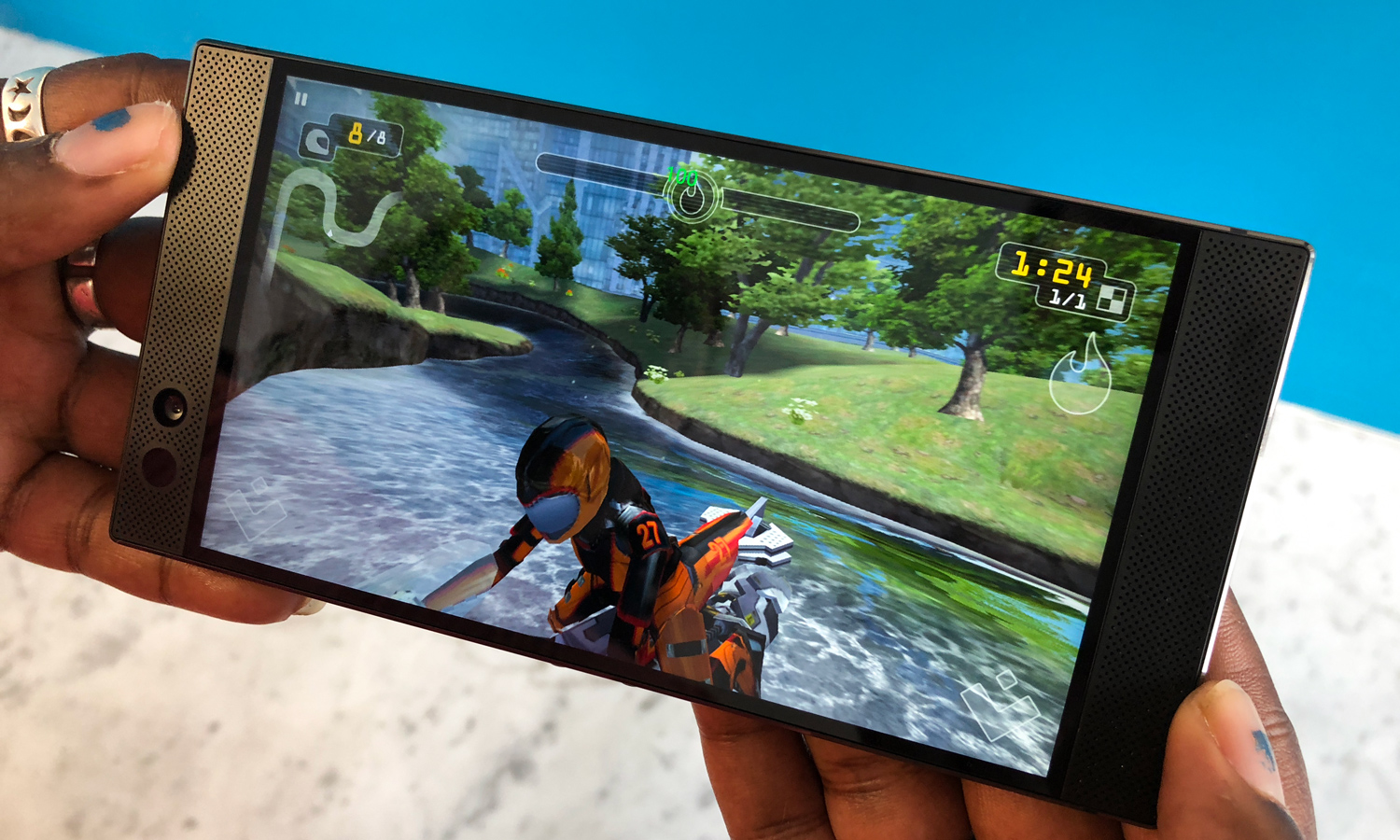
Available for $699 unlocked, the Razer Phone debuts November 17. And it brings Razer's gaming-centric focus to handheld mobile devices with the first 120Hz screen for phones, called Ultramotion, and the sweetest sounding speakers we've ever heard from a handset.
Design
The Razer Phone is stately and unassuming at the same time. Similar to the Blade, Blade Stealth and Blade Pro, the Razer Phone is made of jet-black CNC aluminum complete with the company's tri-snake logo stamped prominently on the back.
The phone's shape is unapologetically rectangular without a curved edge in sight. In fact, if you look really closely, the phone might remind your of the cloud-based NextBit Robin, which launched back in 2016. This is no coincidence, as Razer acquired that company earlier this year.
That's not to say that there aren't some notable changes from the Robin to the Razer Phone. For instance, the Razer Phone has ditched the 3.5 millimeter audio jack. What you will find is a side-mounted volume rocker , microSD slot and power button that doubles as a fingerprint reader. A USB Type-C port sits along the bottom. The phone offers two 12-megapixel shooters on the rear and an 8MP lens on the front.
MORE: Best Smartphones on the Market Now
Display
The 5.7-inch Razer Phone sports a 2K (2840 x 1080) LCD display, similar to the panel you'd find on the 14-inch Blade laptop. It's an impressive screen, though you don't get the wide viewing angles and eye-popping colors that OLED screen phones offer like the Galaxy S8.
This panel does stand out in one key way: Razer has delivered a 120Hz Ultramotion display with its new phone.
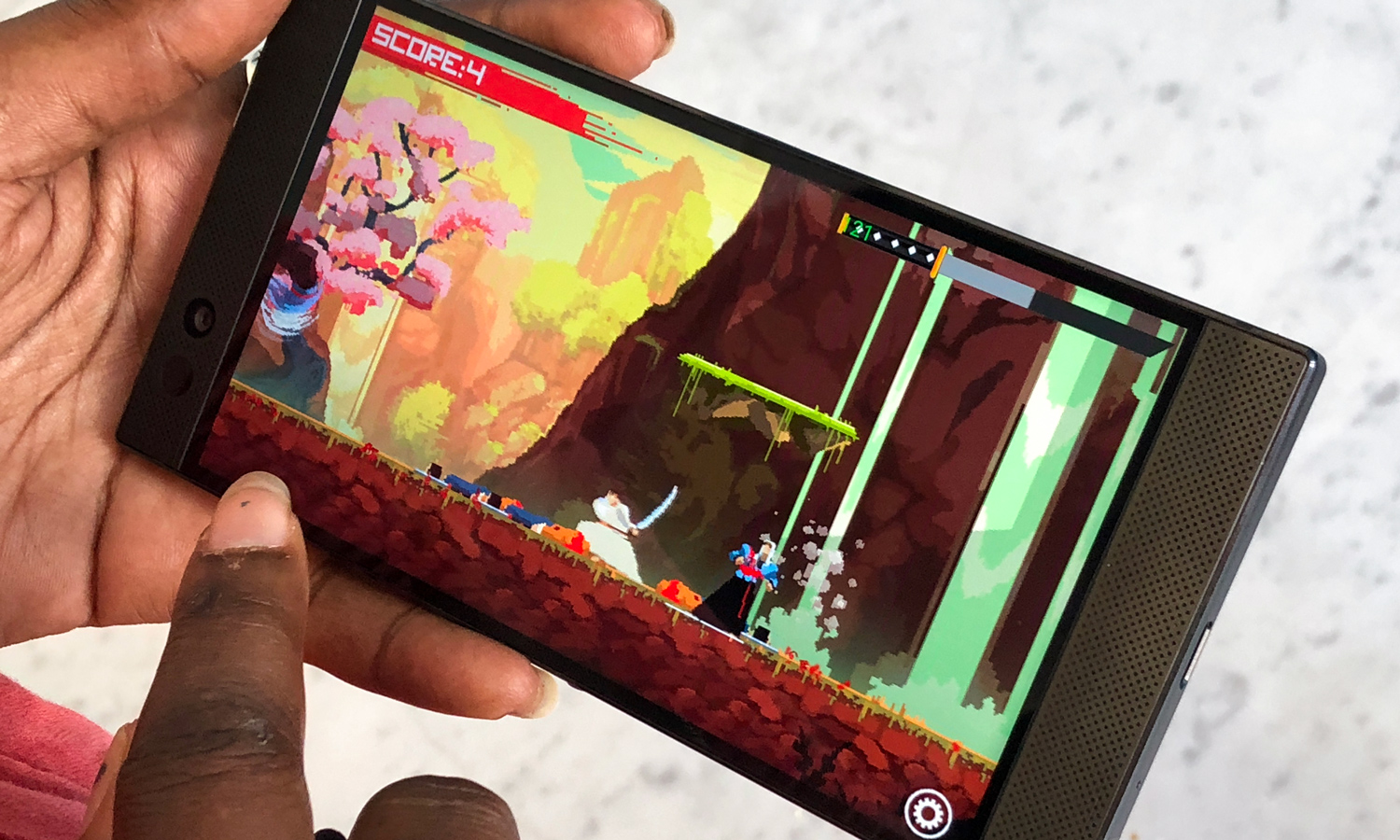
Similar to what Nvidia's G-Sync technology does for laptops and monitors, Razer's proprietary Ultramotion tech synchronizes the display refresh rate with the graphics chip render rate. That means instantaneous rendering with sharper detail and smoother graphics, giving the Razer a refresh rate of 120Hz — something you only see in laptops. monitors and the latest iPad Pro.
That 120Hz refresh rate is great for gamers, as it should cut down on unsightly jagged images and make for a prettier mobile game experience overall. I experienced the benefits of Ultramotion first hand as I ran a few races in Wipeout 2048 and tried the pocket edition of Final Fantasy XV. As I played with the chibized versions of Noctis and Company, the battles were just as gorgeous as if I was playing them on console or PC. And when Razer launched its frame counter app, I consistently saw the phone max out at 120 frames per second.
Also, let's not gloss over the fact that a full version of Final Fantasy XV is coming to Android. It will be broken down into episodes, but it's exciting news nonetheless. Arena of Valor, a popular MOBA (multiplayer online battle arena) in Asia will make its stateside debut on the Razer Phone. Other games coming to the Razer phone include Tekken, RuneScape, World of Tanks Blitz and Titanfall Assault, to name a few.
MORE: Best Unlocked Smartphones
Specs
The Razer Phone is more than its bitchin' display. The Android 7.0 (Nougat) phone bursts with power, thanks to a Qualcomm Snapdragon 835 processor paired with 8GB of RAM and 64GB of onboard storage. Unfortunately, Razer's not implementing NextBit's cloud storage uploading solution, instead allowing you to add up to 2TB of capacity via the phone's microSD slot.
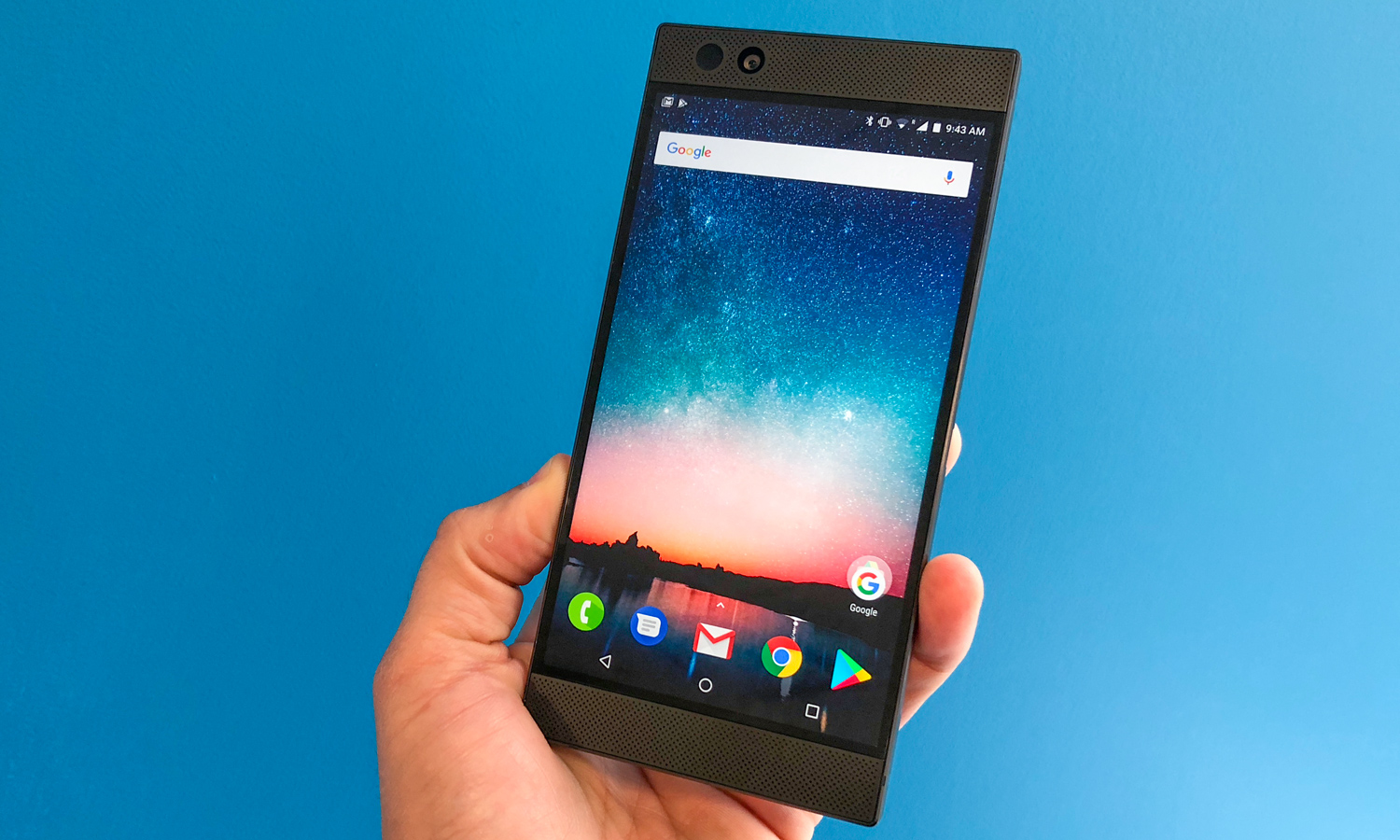
In anticipation of high temperatures while gaming, Razer is also preloading its Game Booster app to help optimize power and performance so the all-aluminum phone doesn't become uncomfortable to hold. In my short play time, I did notice that the phone got negligibly warm. However, that was only after 10 or so minutes of play. I'm eager to see what happens at the 30-minute mark.
Audio: Loudest Phone Evar!
Put away that Bluetooth speaker. You won't need it with the Razer Phone. The phone's front-firing speakers are the same that you'd find on the Blade laptop, but the grilles are a bit larger. Also, both speakers come equipped with their own amplifier, which gets even more of a boost from the preinstalled Dolby Atomos software.
I scoffed when a Razer rep told me that this would be the loudest smartphone I've ever heard. And then a Dolby demo played, and I found myself having to seriously raise my voice to be heard over these relatively small speakers.
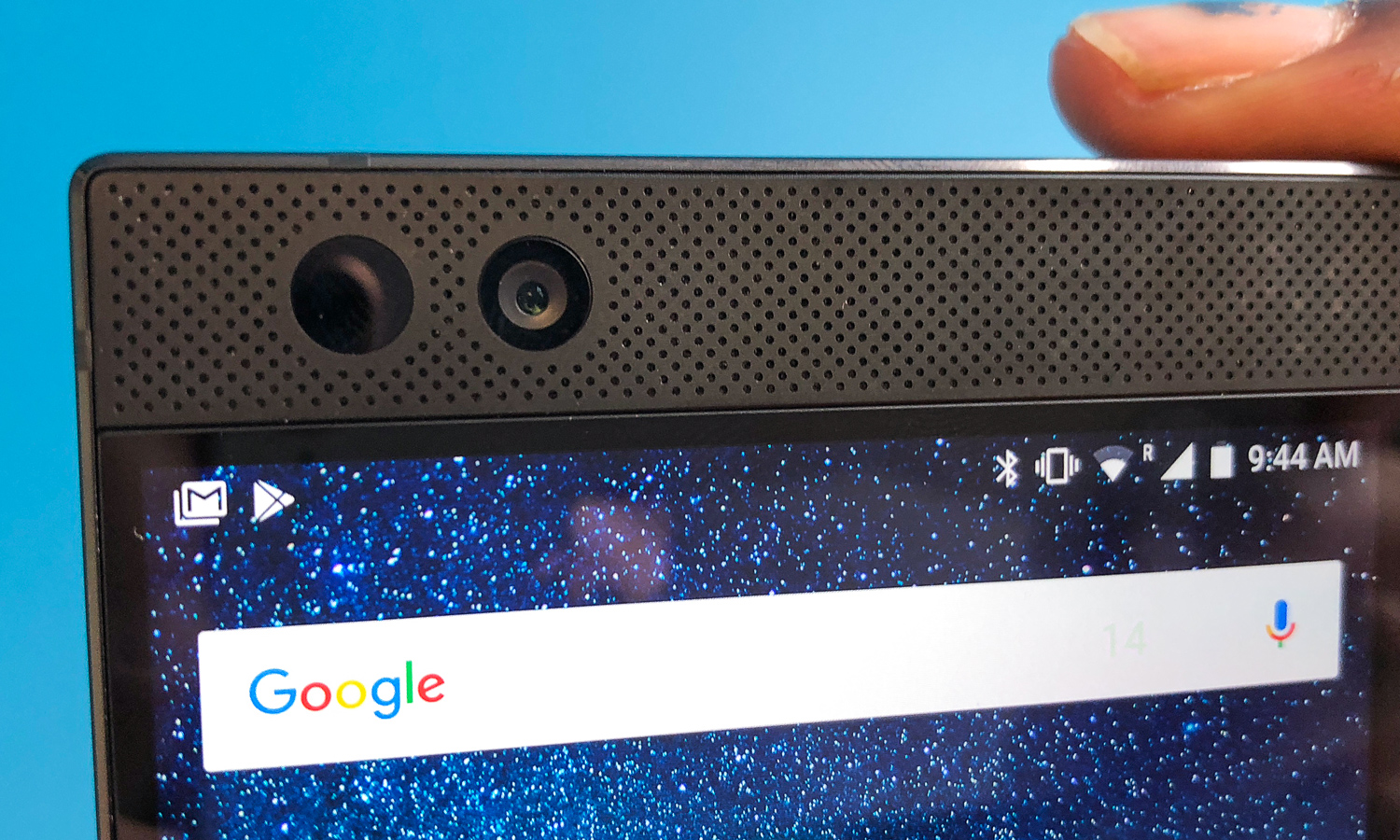
The audio is more than just loud, it's shockingly clear to the point where I could hear individual raindrops hitting the ground against rolling bouts of thunder.
And just like the 4K version of the Razer Blade Pro, the Razer Phone rocks some THX-certification in the form of the USB-C audio adapter that features a 24-bit digital-to-analog (DAC) converter. So you can get audiophile quality while wearing your headphones.
MORE: Best Android Games
4,000 mAh: That's a Big Battery!
Anyone that's engaged in a long-term gaming session will tell you that it's a major drain on your battery. That's why Razer has outfitted the phone with a 4,000 mAH battery. Razer is keeping mum on actual battery life estimates, but I'm looking forward to putting the smartphone through its paces once it arrives for review.
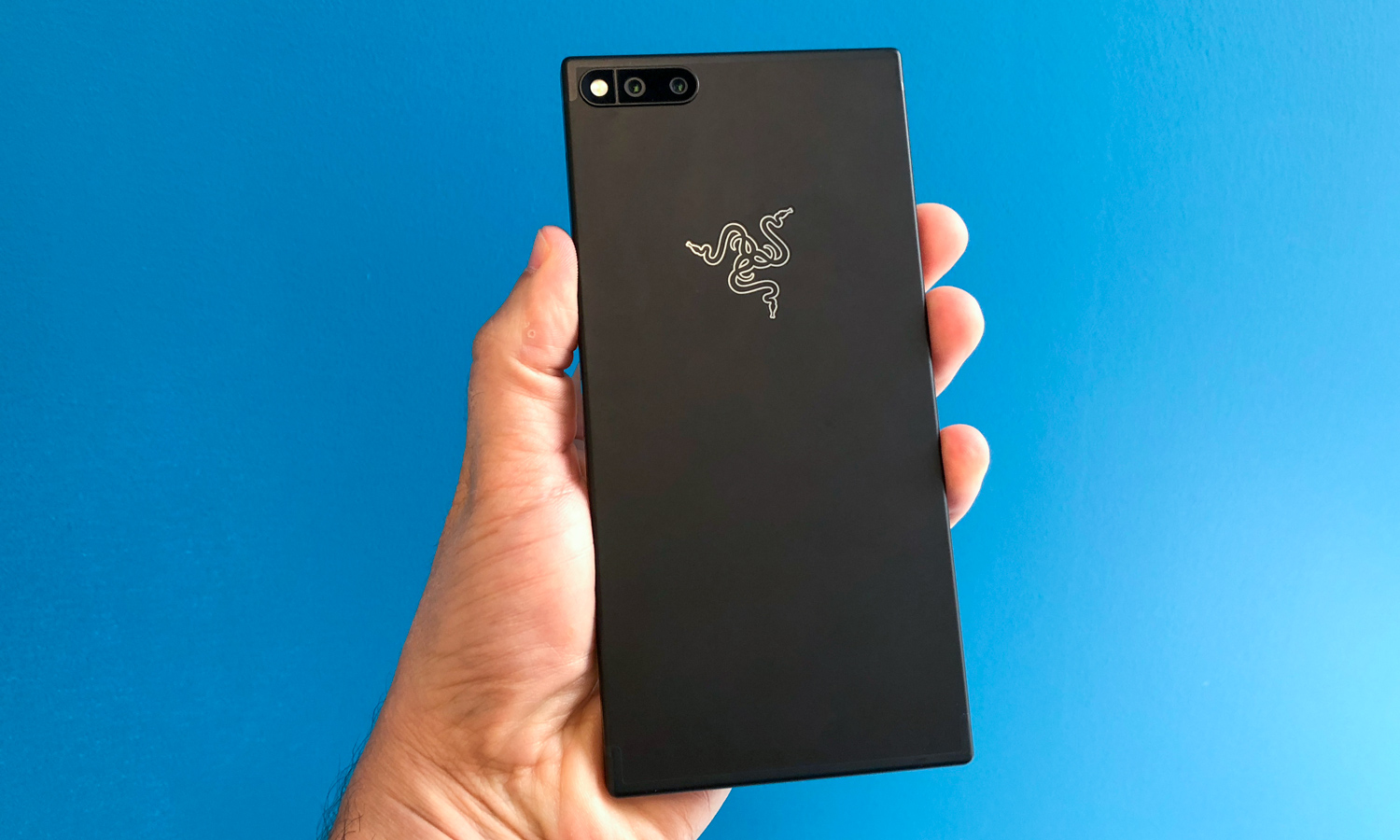
In another world's first, the Razer Phone will ship with Qualcomm Quick Charge 4+ technology. Oualcomm claims that its proprietary tech will charge a device 15 percent faster with 30 percent more efficiency.
Outlook
As a smartphone built for gamers, by gamers, the Razer Phone could potentially be the phone I didn't know I wanted or needed. Packing a stunning 5.7-inch display with a 120Hz refresh rate, 8GB of RAM and thunderous speakers, this handset could establish a gaming phone niche that the Xperia Play PlayStation failed to do. I'm just hoping the heat management holds up.
The $699 price is pretty reasonable, too, as it's more affordable than other big-screen flagships like the Galaxy S8+ ($850), Galaxy Note 8 ($950), Pixel 2 XL ($850), iPhone 8 Plus ($800) and iPhone X ($999). I'm looking forward to reviewing the Razer Phone in the near future.
Sign up to get the BEST of Tom's Guide direct to your inbox.
Get instant access to breaking news, the hottest reviews, great deals and helpful tips.
Sherri L. Smith has been cranking out product reviews for Laptopmag.com since 2011. In that time, she's reviewed more than her share of laptops, tablets, smartphones and everything in between. The resident gamer and audio junkie, Sherri was previously a managing editor for Black Web 2.0 and contributed to BET.Com and Popgadget.

